Marrakech, the “Red City” of Morocco, is known for its stunning color palette that captivates the eyes and stirs the soul. While many think of Marrakech as a city of terracotta and warm reds, it’s a place where over 1000 hues paint the streets, markets, and palaces, each one telling a story of culture, tradition, and history.
From the tiles of Bahia Palace to the colorful scarves in the souks, the colors of Marrakech are more than just beautiful sights. They are a reflection of the city’s deep cultural roots, craftsmanship, and the magic that lingers in the air.
In this article, we’ll explore how the colors of Marrakech are woven into its traditions, from textiles and spices to architecture and festivals.
The Palette of Marrakech
Marrakech’s colors are not arbitrary; they are tied deeply to Moroccan identity. The shades of the city vary from the rich reds and oranges of its terracotta walls to the blues of the fountains, the greens of the palm trees, and the golden hues of the desert dunes that surround it.
Each color has its own significance, representing everything from faith and fertility to beauty and protection.
1. The terracotta red: Marrakech’s signature hue
The first and most prominent color of Marrakech is undoubtedly red. Often referred to as the “Red City,” Marrakech is defined by its red-hued buildings, walls, and streets. This vibrant color, derived from the natural clay found in the region, is a symbol of strength and vitality. Red has spiritual significance in Morocco, representing both protection and good fortune.
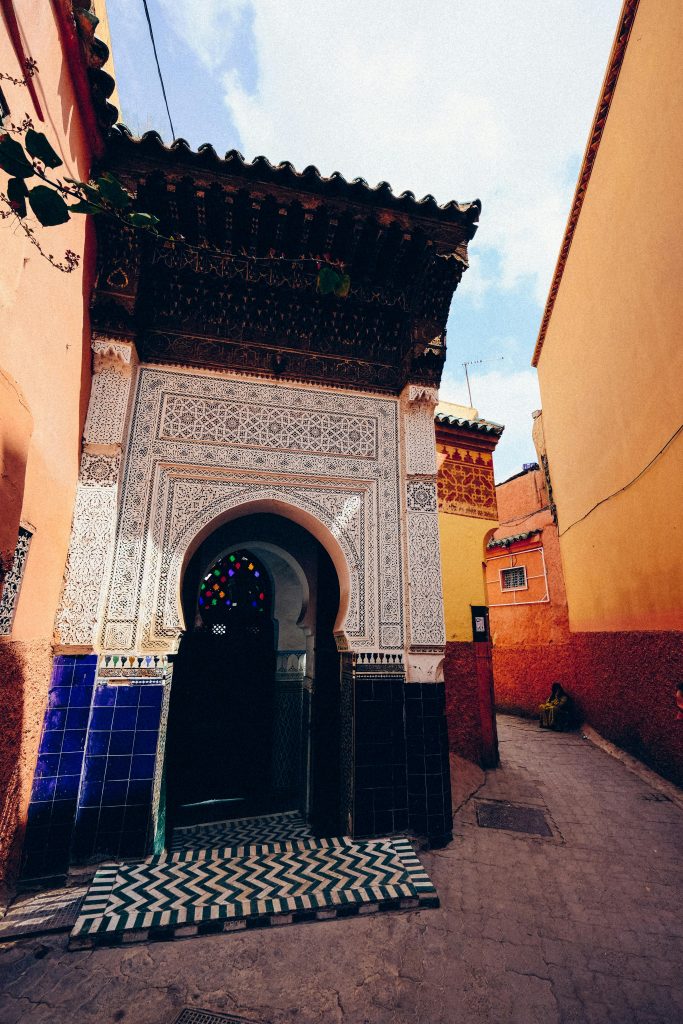
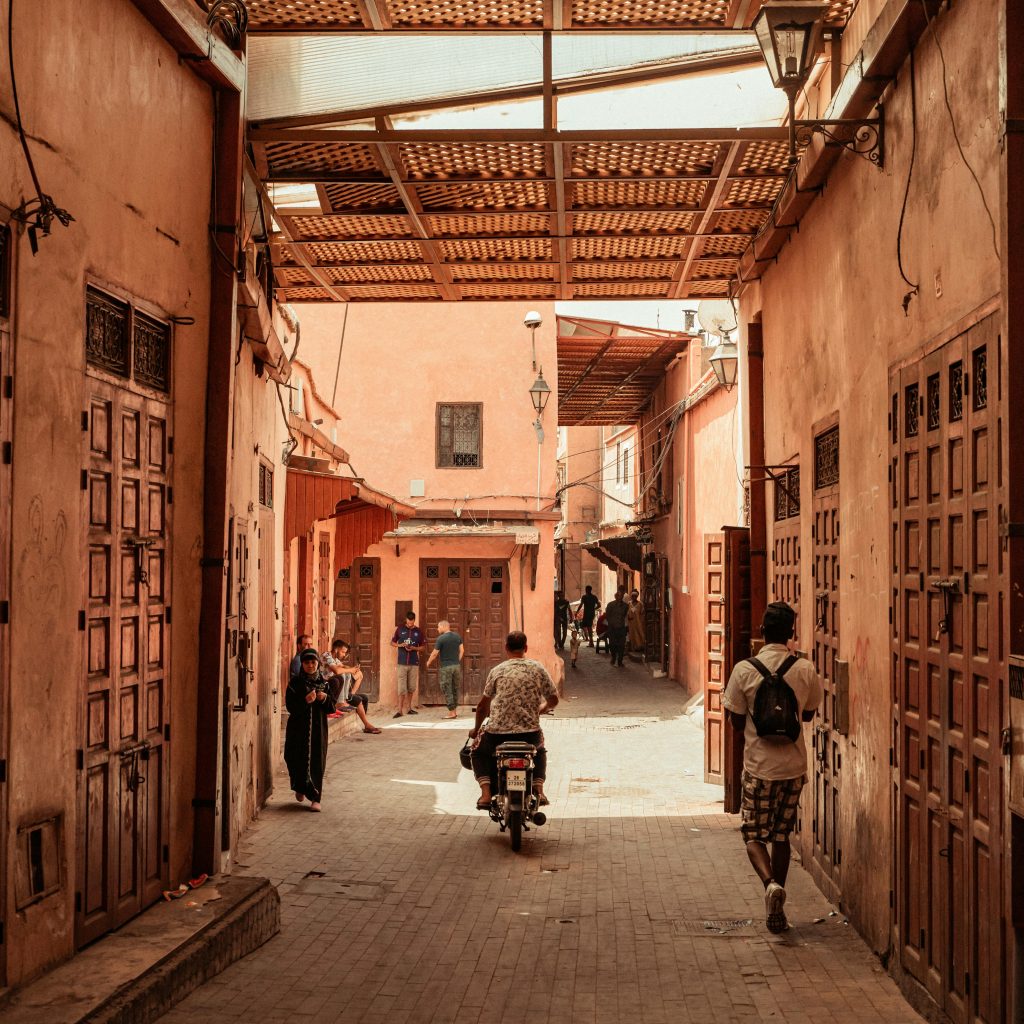
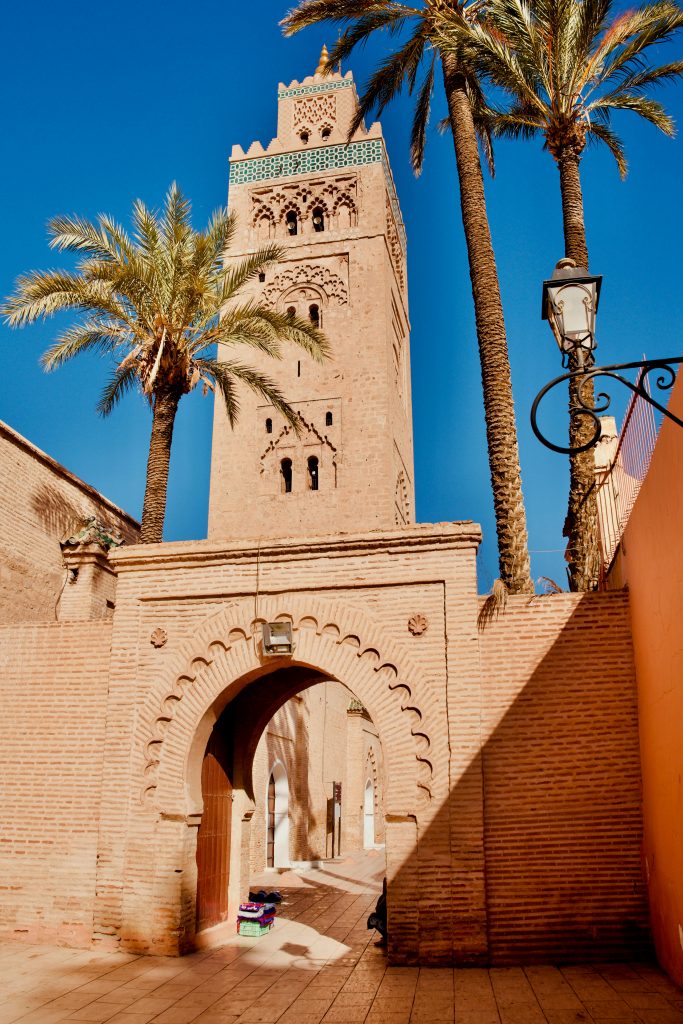
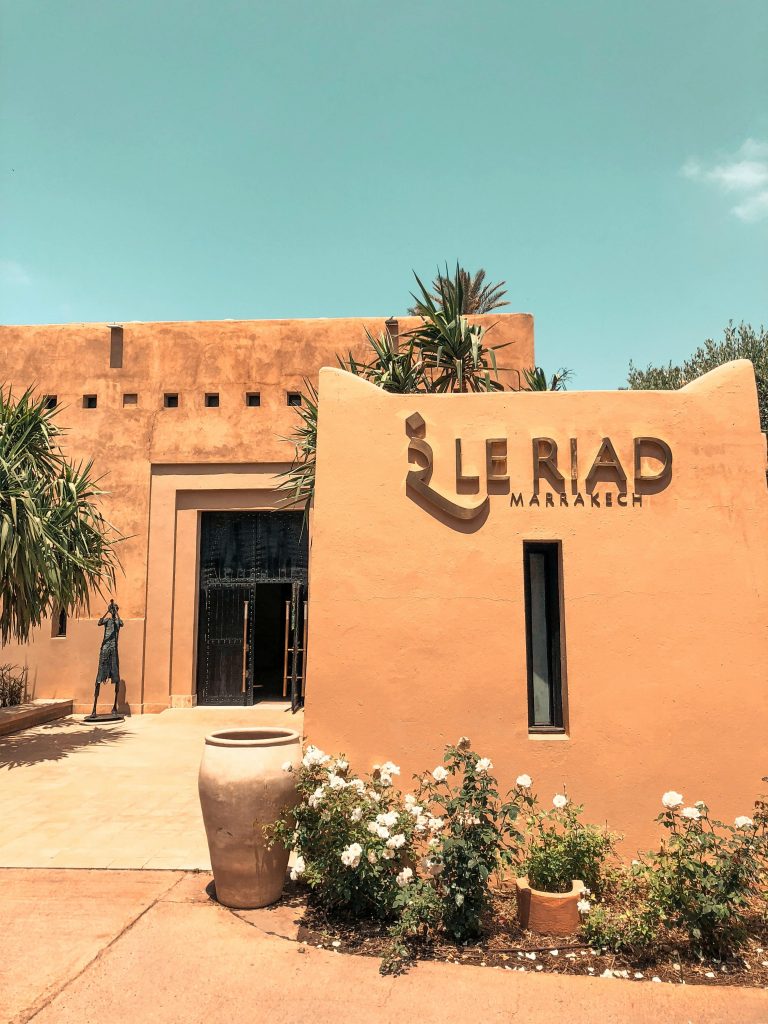

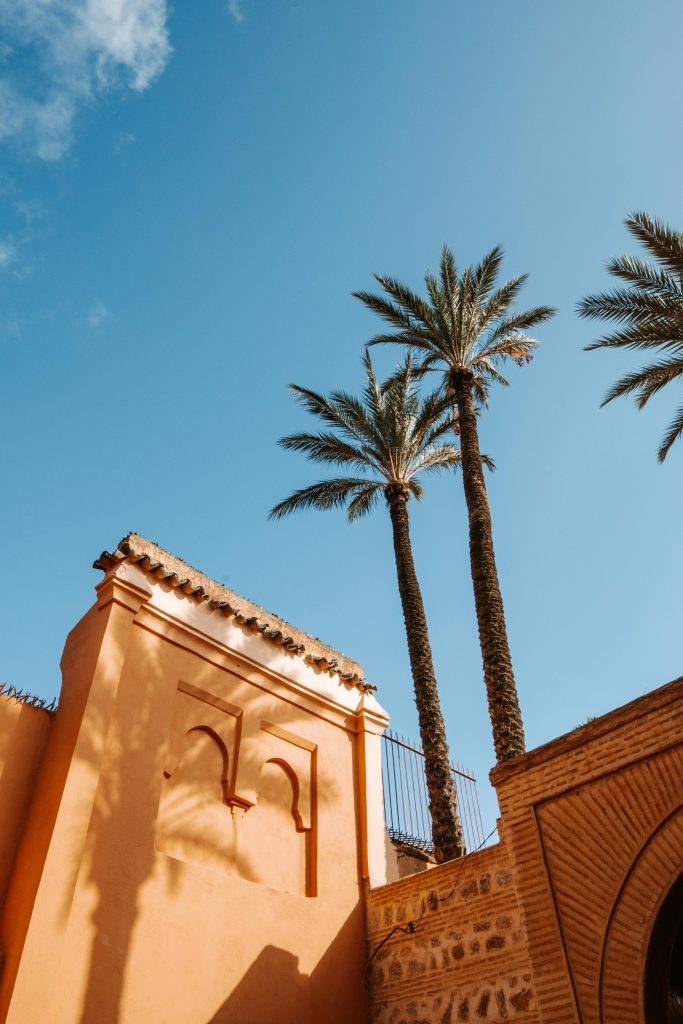
The red hue is not just an aesthetic choice – it’s an essential part of the city’s architectural identity. The use of red in the city’s buildings reflects a longstanding tradition that dates back to the Almoravid dynasty, who ruled over Marrakech in the 12th century.
Their decision to use red stone, called “pierre ocre” or ochre stone, was both practical and symbolic. The color is believed to ward off the evil eye and bring good luck, which is why it remains a central feature of the city’s construction.
2. The Blues of the Majorelle Garden and Medina
Marrakech is not only a city of reds and earth tones – its blue shades are equally as iconic. One of the most famous examples of blue in Marrakech is the Majorelle Garden. A lush botanical oasis that was designed by French artist Jacques Majorelle.
The vibrant blue of the garden’s walls, known as Majorelle Blue, is a unique shade that has become a symbol of peace and tranquility. Majorelle chose the color to contrast the greenery, creating a peaceful escape from the city’s heat.
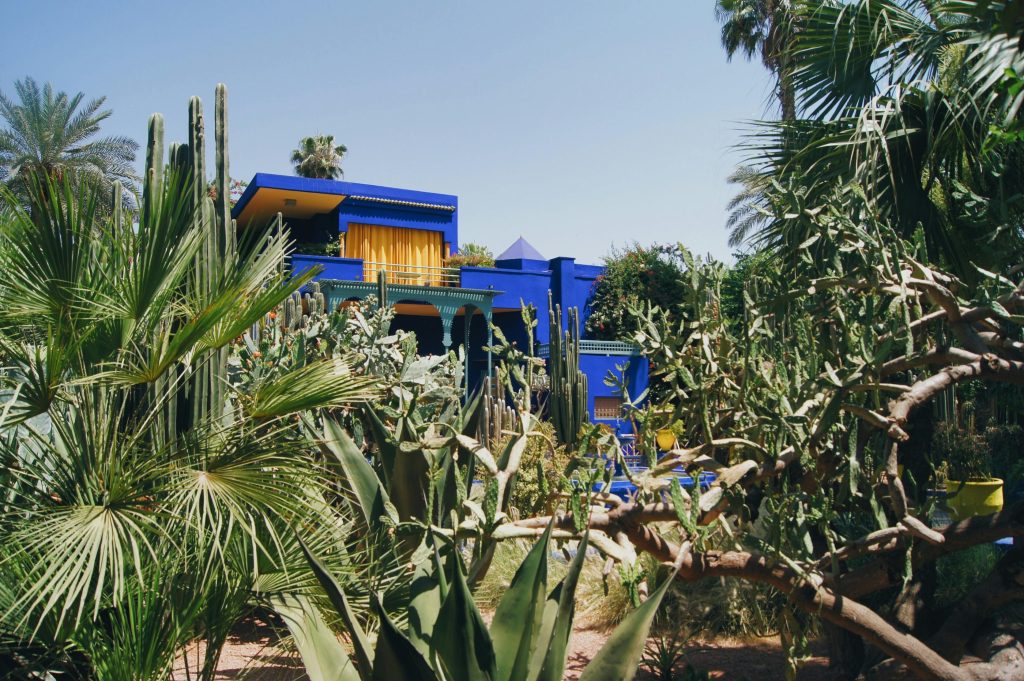
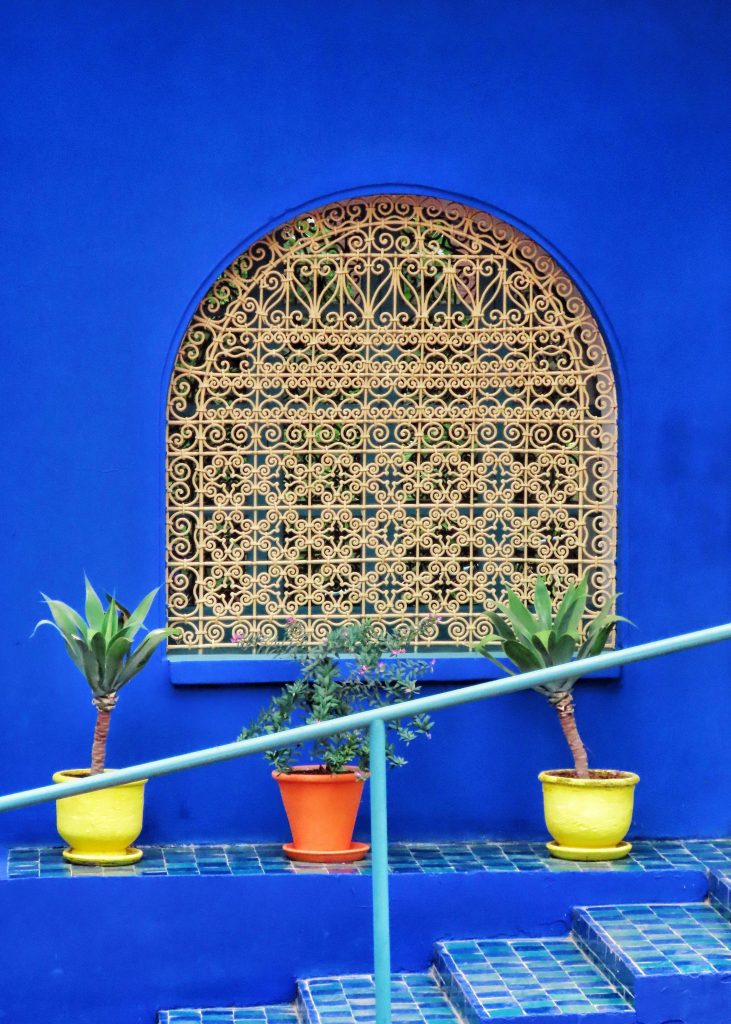
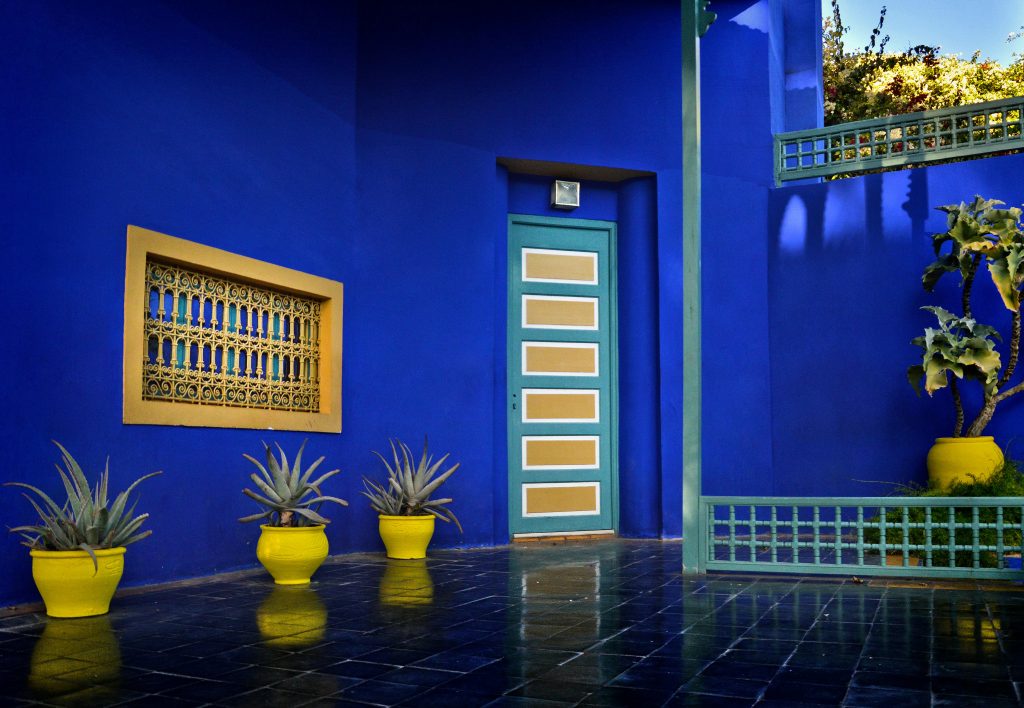
In the Medina, blue-painted doors and windows contrast beautifully with the city’s desert tones.
These blues symbolize spirituality, wisdom, and protection from negative energy in Moroccan culture.
3. The golden sands of the Desert
Just outside the city lies the vast Sahara Desert, whose golden sands seem to shimmer beneath the Moroccan sun. Golden ochre fills the city, from the evening sky to the spices and rugs in the souks. It also symbolizes the resilience of the Moroccan people, thriving at the edge of the harsh desert.

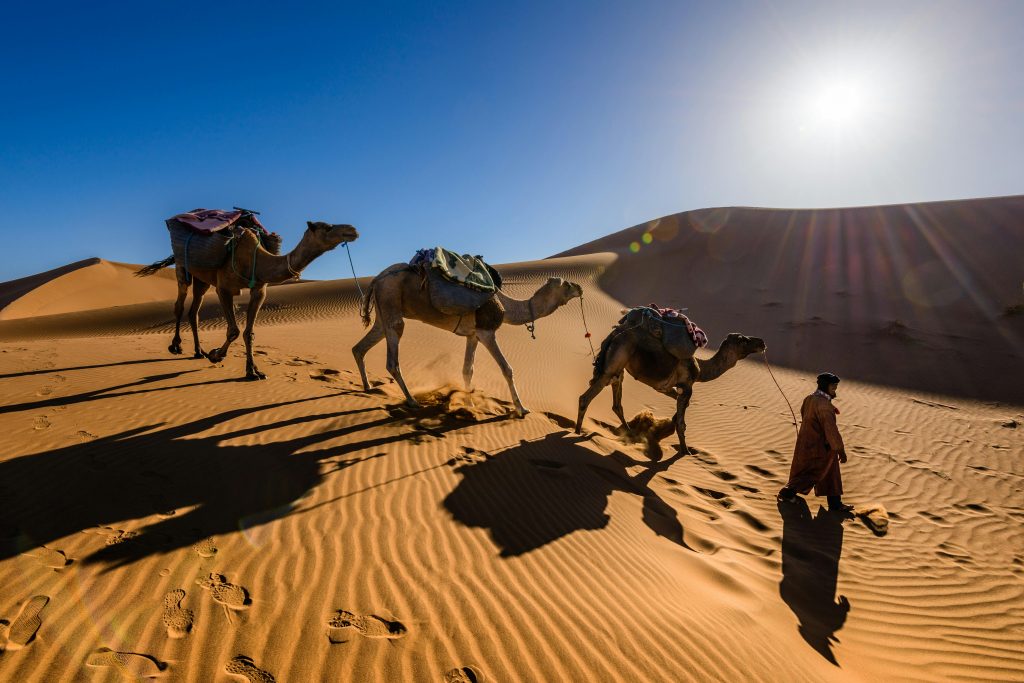
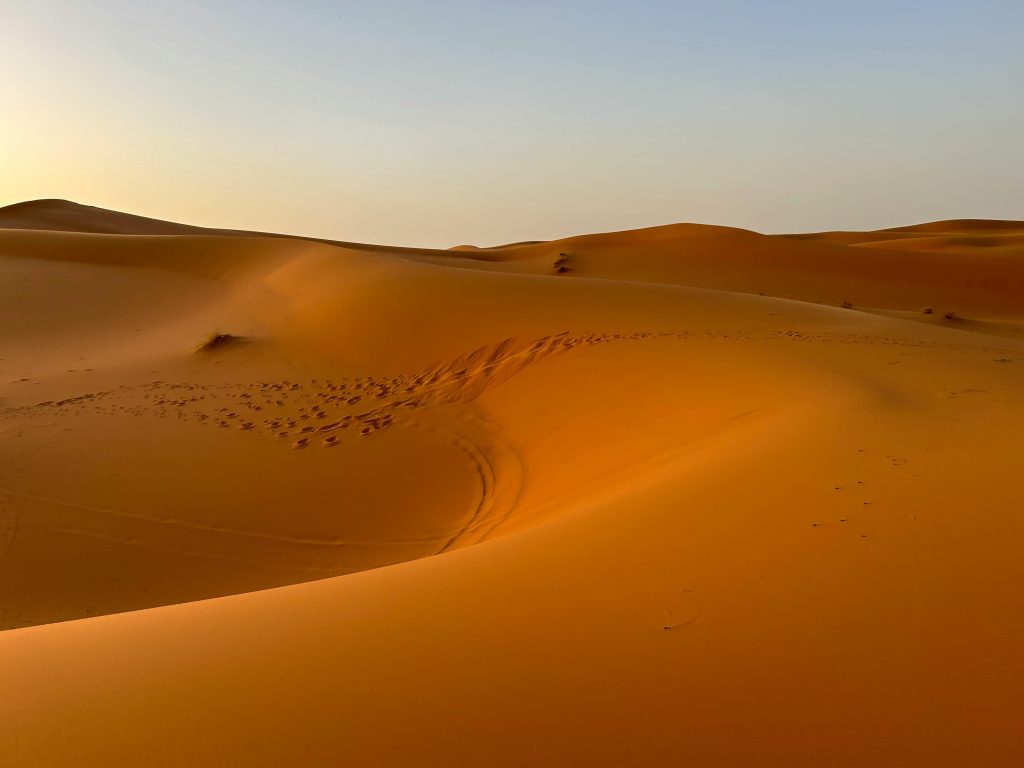
The desert is an ever-present influence. Its color is seen in everything from architecture to the iconic kefta (Moroccan meatballs) served in tagines.
4. The green of faith and fertility
Green is another important color in the culture of Marrakech. Green, linked to Islam and Morocco’s royal heritage, appears in mosque mosaics, street trees, and mint tea. The green tiles of the Koutoubia Mosque and the city’s gardens symbolize growth, fertility, and spiritual purity.
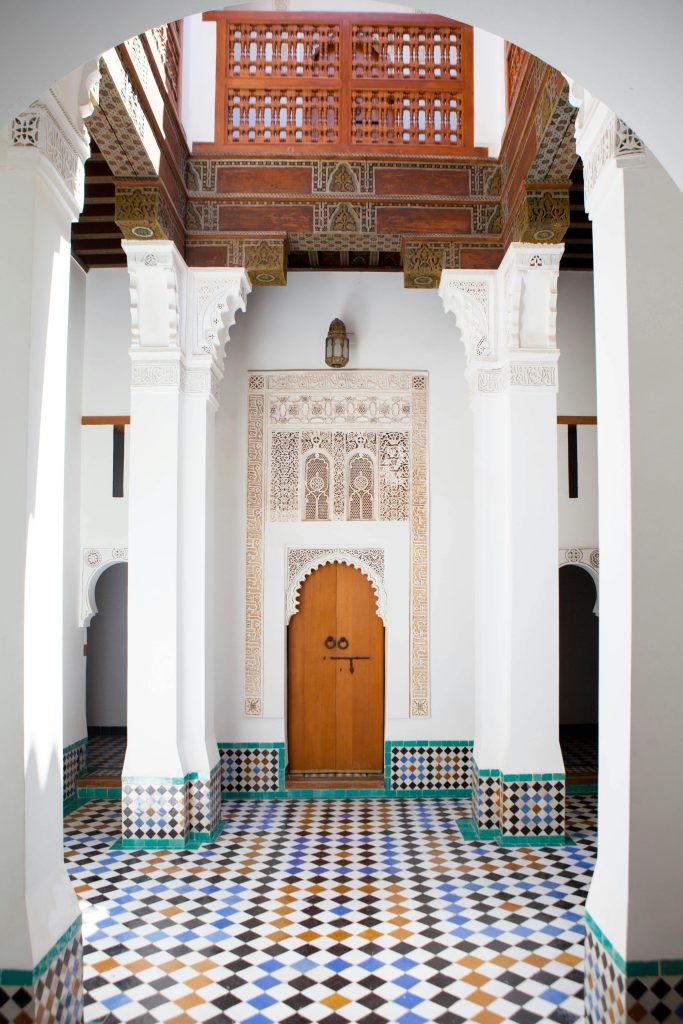
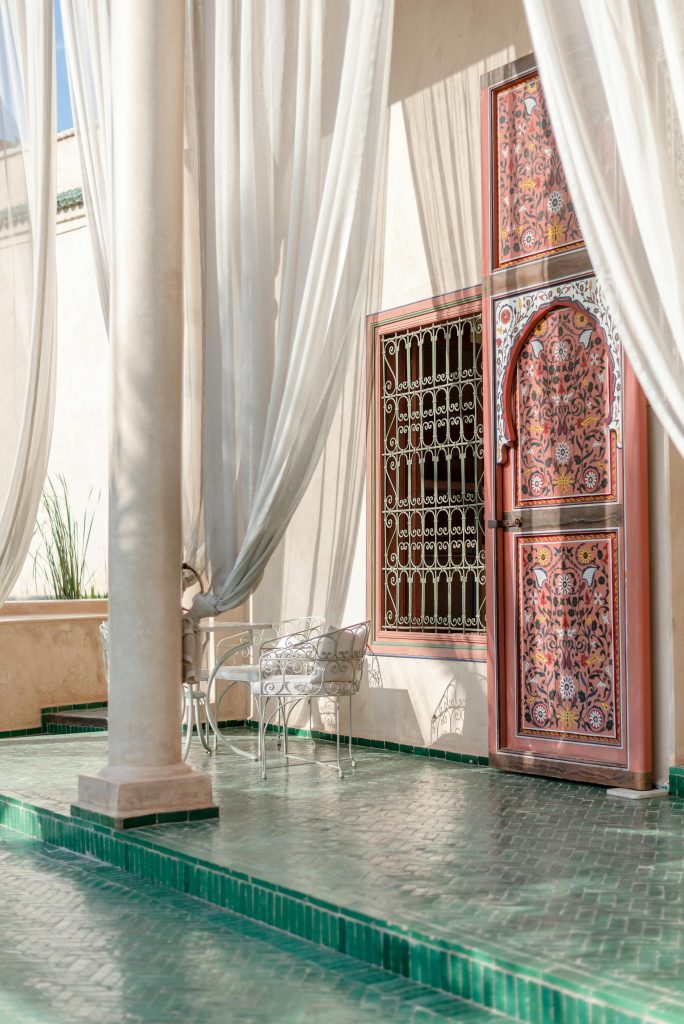
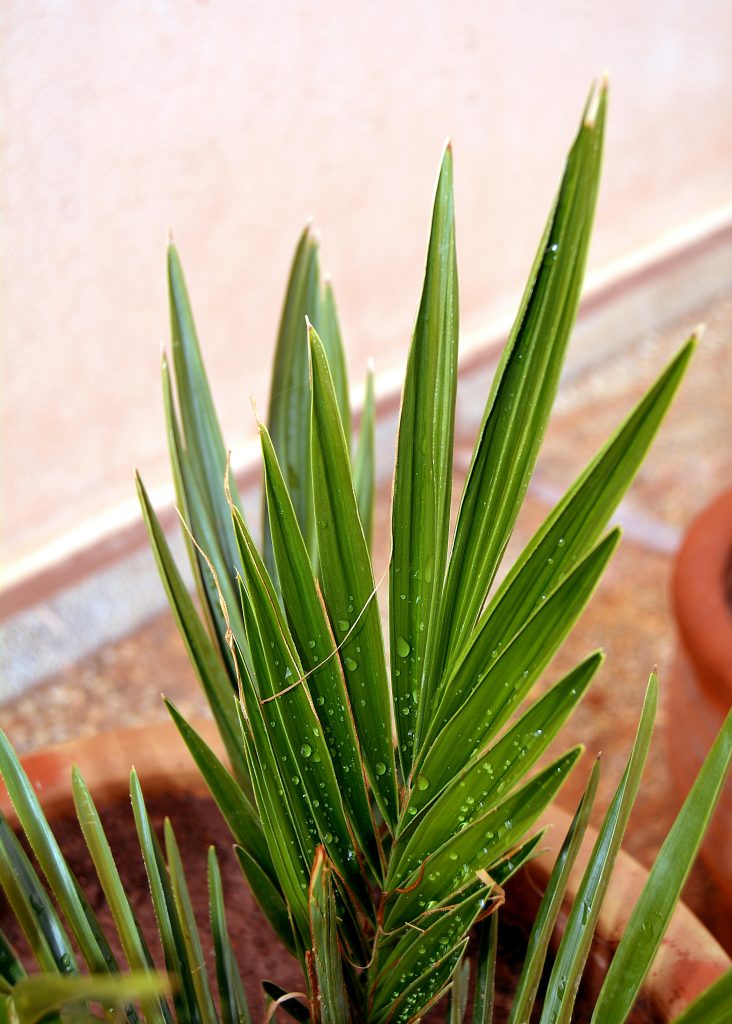

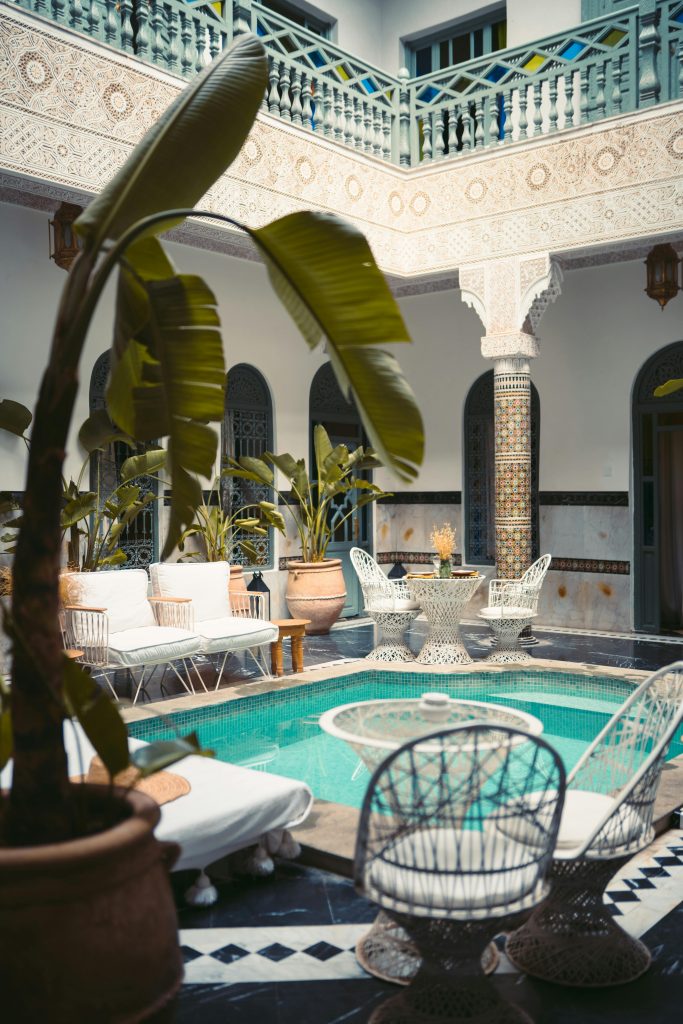
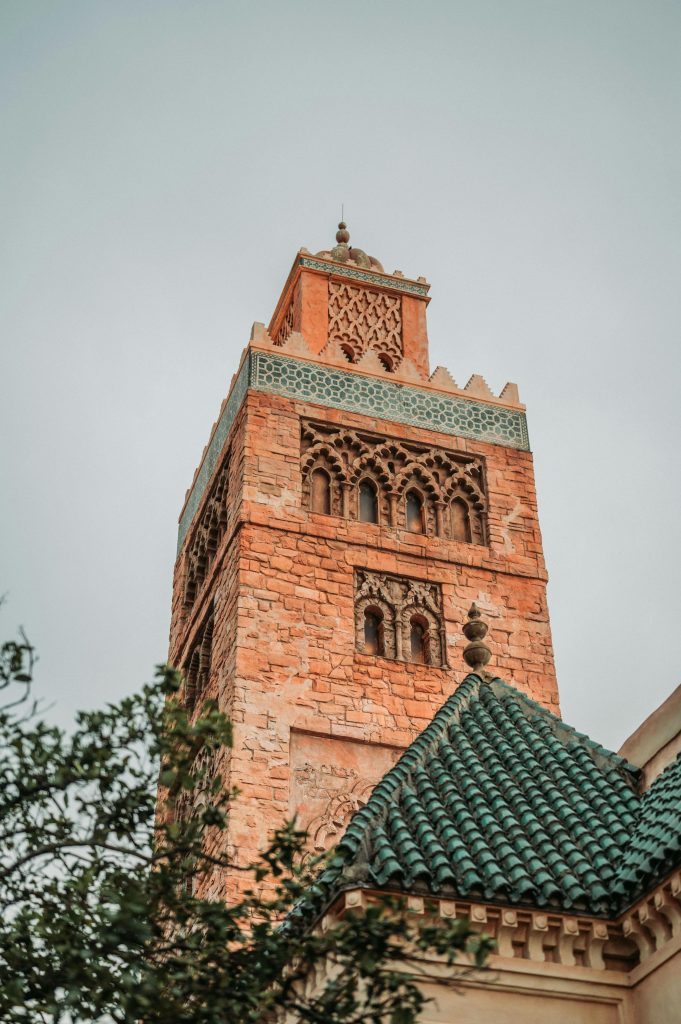
Green is also prevalent in Moroccan textiles. Green scarves, cushions, and even carpets are woven with intricate patterns to represent luck, prosperity, and peace.
This color so deeply intertwined with the identity of Morocco that it is often the first color one thinks of when reflecting on the spiritual aspects of the country.
The Souks: a rainbow of colors
A trip to Marrakech would not be complete without wandering through its vibrant souks. Here, colors burst forth from every corner. From the reds and oranges of saffron and chili peppers to the purples of dried lavender and the greens of fresh mint.
The souks are a sensory experience. Merchants use color not just to attract buyers but also to express their artistic skills and preserve traditional crafts.
The famous Moroccan carpets are woven in a kaleidoscope of colors, often symbolizing the weaver’s family history, region, and beliefs.
Each pattern and color on these rugs tells a story, whether it’s the deep reds symbolizing the earth, the blues representing water and heaven, or the golds representing the sun and prosperity.
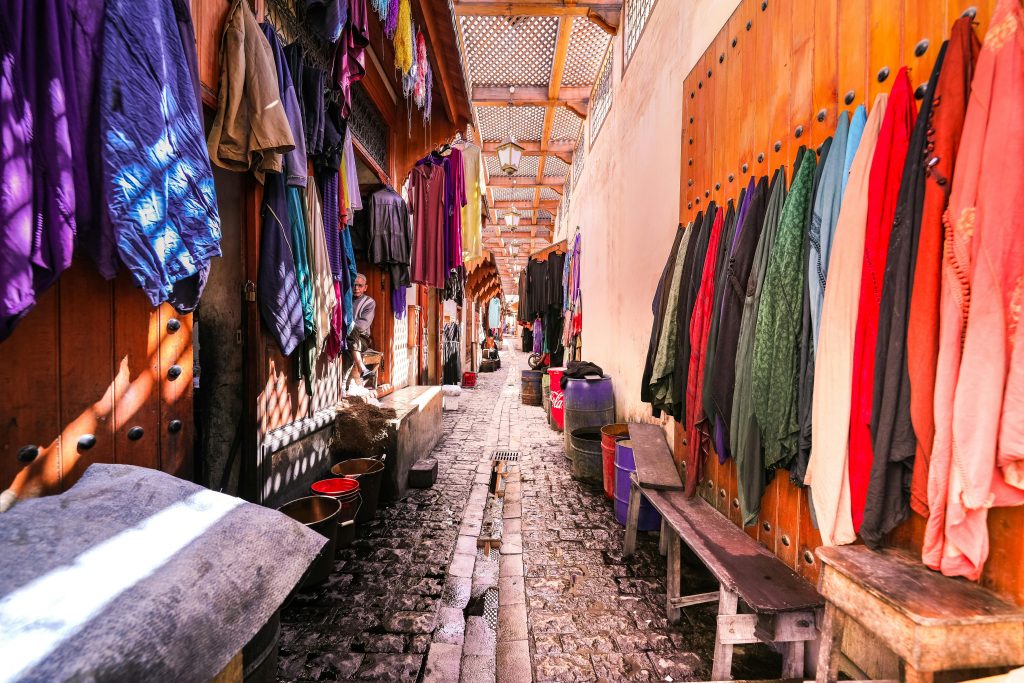
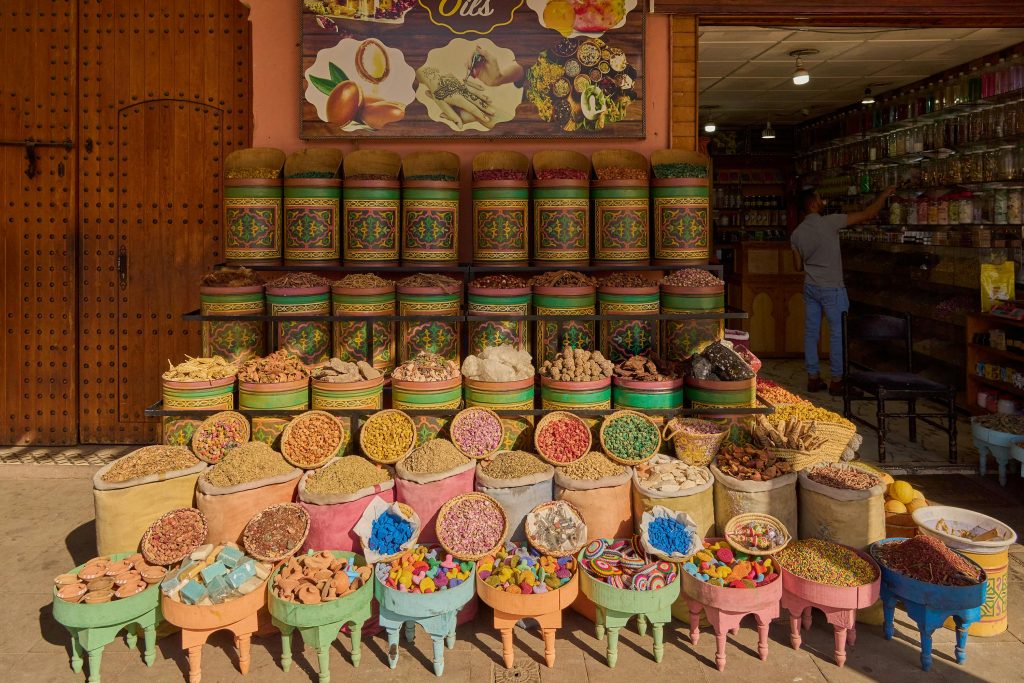
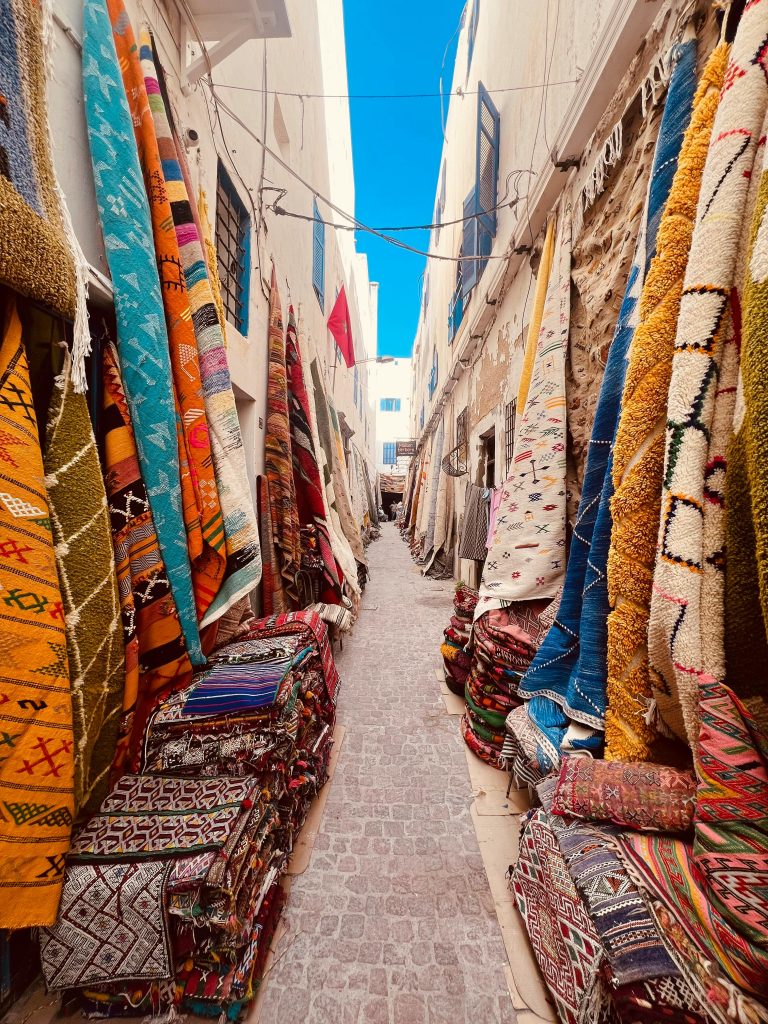
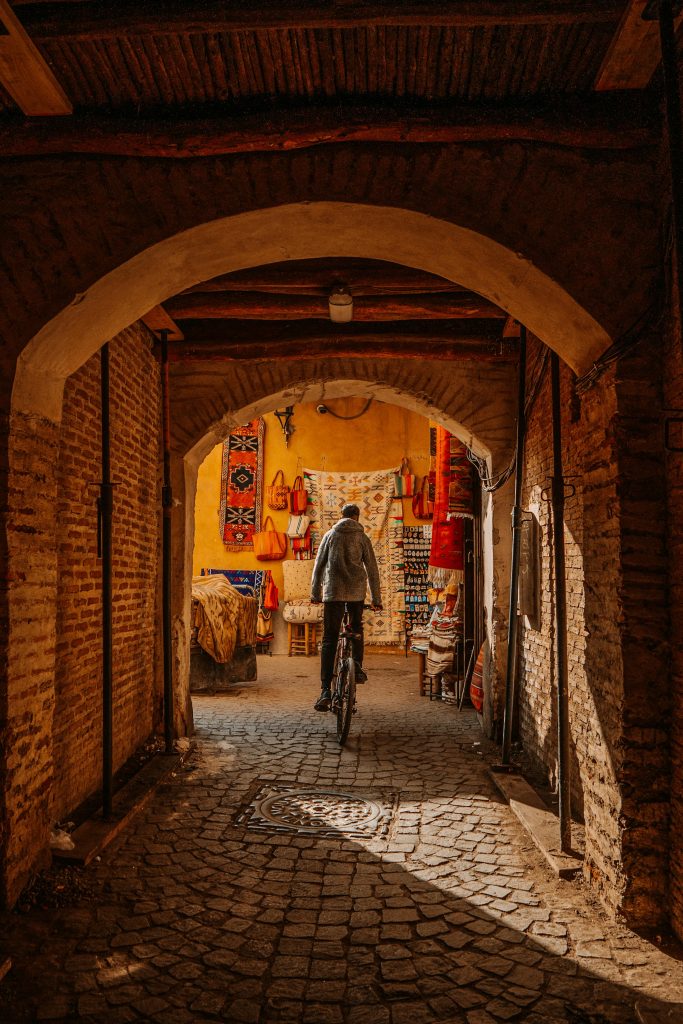

And then there are the textiles – scarves, robes, and fabrics in every conceivable color. From jewel tones to soft pastels, the textiles of Marrakech showcase the region’s mastery of dyeing techniques. In the medina, you can find local artisans who still use ancient methods to create these vibrant fabrics, passed down from generation to generation.
Festivals and celebrations: a celebration of color
Marrakech is a city of festivals. Each one brings with it a new opportunity to experience the city’s kaleidoscope of colors in motion. Whether it’s the Marrakech International Film Festival, the Atlas Electronic Festival, or the annual music and art festivals, the city’s streets come alive with color during these events.
One of the most notable festivals is the Marrakech Popular Arts Festival, which showcases the rich cultural heritage of Morocco. This event fills the city with vibrant costumes, music, and dance performances.
The people of Marrakech don the brightest hues of traditional Moroccan attire, from brightly colored djellabas to intricately embroidered kaftans, as they celebrate their culture and history.
Conclusion: a tapestry of life in 1000 colors
The colors of Marrakech are not just visual. They are woven into the very fabric of life in this ancient city. Every shade tells a story, reflects a belief, and represents a deep connection to the land, the people, and the traditions of Morocco.
From the vibrant reds of the city’s walls to the tranquil blues of the Majorelle Garden, the golden hues of the desert, and the greens of faith, Marrakech is a living canvas…

Recent Comments